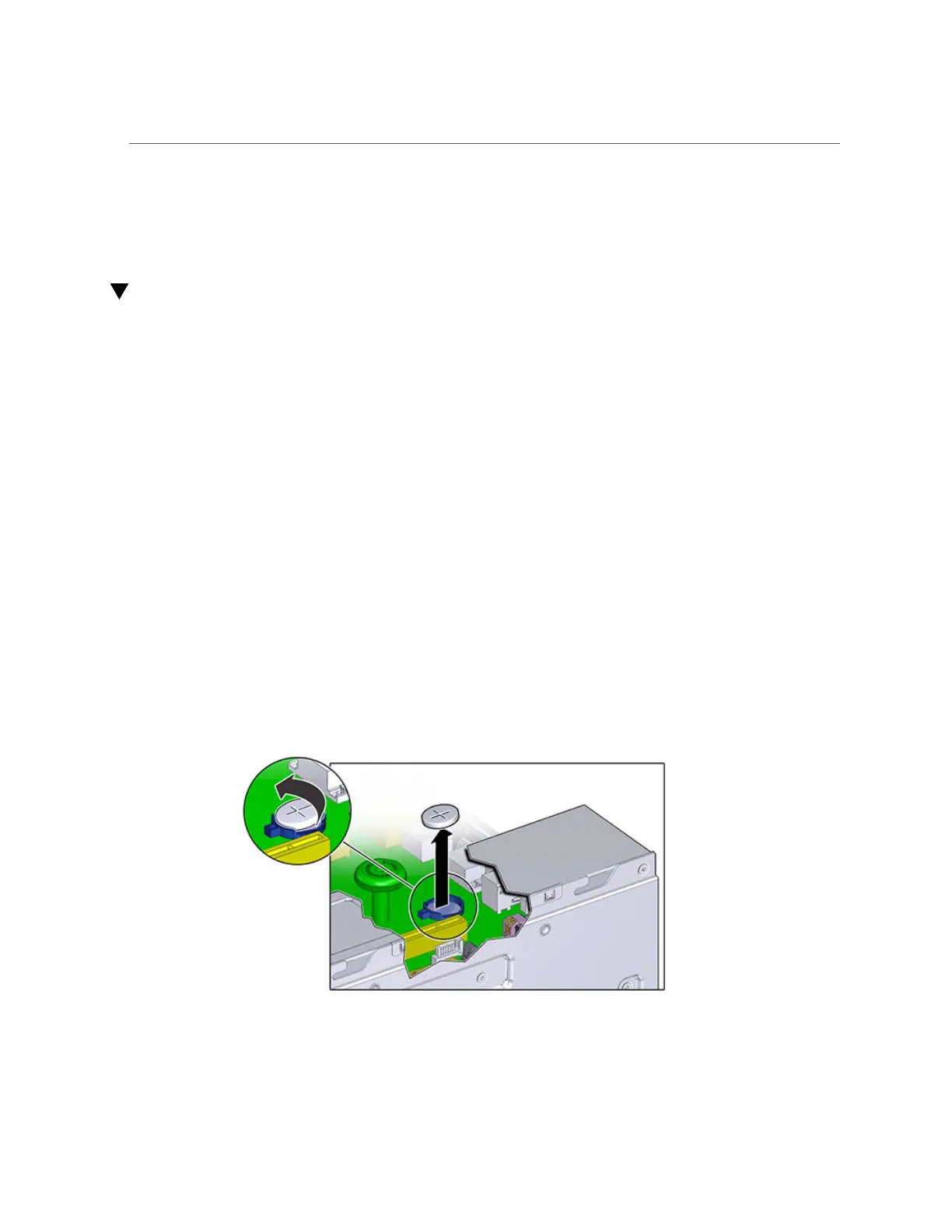Replacing a ZS3-2 Battery
13.
After the SP status indicator is solid green, use a pen or other pointed object to
press and release the recessed Power button on the front panel. The Power/OK
status indicator next to the Power button lights and remains lit.
Replacing a ZS3-2 Battery
Removing the battery is a cold-service operation. You must power off the appliance before
you remove the battery. There will be a loss of access to the storage unless the system is in a
clustered configuration.
You might need to replace the battery if the storage controller fails to maintain the proper time
when powered off and disconnected from the network. You will need a small (No.1 flat-blade)
non-metallic screwdriver or equivalent. Use the following procedure to replace a ZS3-2 battery.
1.
Power off the storage controller as described in “Powering Off the
Controller” on page 50.
2.
Extend the controller from the rack as described in “Extending the Storage
Controller from the Rack” on page 51.
3.
Remove the top cover as described in “Removing the Top Cover” on page 52.
4.
Remove Riser 1.
5.
Press the tab of the battery receptacle forward to release the battery. The battery
pops up.
154 Oracle ZFS Storage Appliance Customer Service Manual • July 2016

